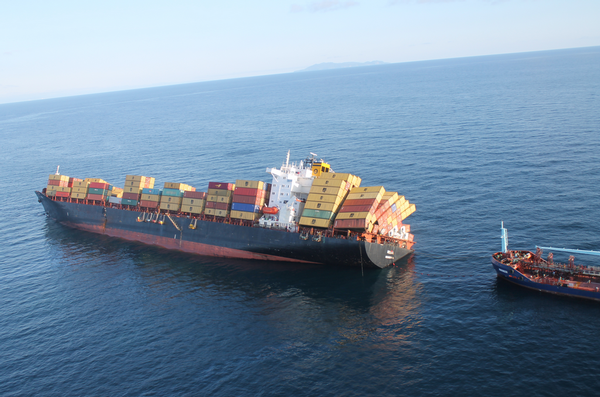Rena update (update 53)
26 October 2011: 7.15am
The removal of fuel from the cargo vessel Rena continued overnight with the salvage team confirming they are now past halfway.
There was around 1700 tonnes of fuel oil on Rena when it grounded on the Astrolabe Reef on 5 October. Around 350 tonnes has spilled from the ship, and as at 3pm yesterday a confirmed total of 645 tonnes had been transferred to the tanker Awanuia.
The salvage team will do an accurate calculation of the amount removed this afternoon. However, salvors estimate they passed the halfway point overnight.
Maritime New Zealand (MNZ) Salvage Unit Manager Bruce Anderson said it was encouraging to reach the milestone, but warned the second half of the fuel posed some serious challenges.
“The salvors now have the pumping system working well and they are getting good transfer rates, which is excellent.
“However, the second half of the oil is in around four tanks, rather than one – and one of them is submerged underwater.”
Mr Anderson said the salvors would be working today to establish a fuel transfer system from the three tanks in the engine room, which together hold around 250 tonnes of oil, to the tug Go Canopus.
The salvors are currently pumping from these tanks into the port number 5 tank and then onto Awanuia.
“Transferring the oil direct to Go Canopus will hopefully speed up the process,” Mr Anderson said.
National On Scene Commander Rob Service said the team at the incident command centre was continuing to prepare contingency planning in case the remnants of the 5-10 tonnes of oil released from the ship overnight on 22/23 October reached Tūhua/Mayor Island or the Coromandel.
On current projections, the remaining oil is not expected to reach land for two more days.
Mr Service said as the oil had now been in the water for several days, any remaining oil would be weathered and likely to wash up on shoreline as tar patties or tar balls.
Operational teams were going to both areas today to assess response options.
“We have a team going to Tūhua today to assess the use of booms to protect key areas. We have also sent teams to assess the impact any oil reaching the shore could have on wildlife.”
A wildlife stabilisation site had been set up on the island.

